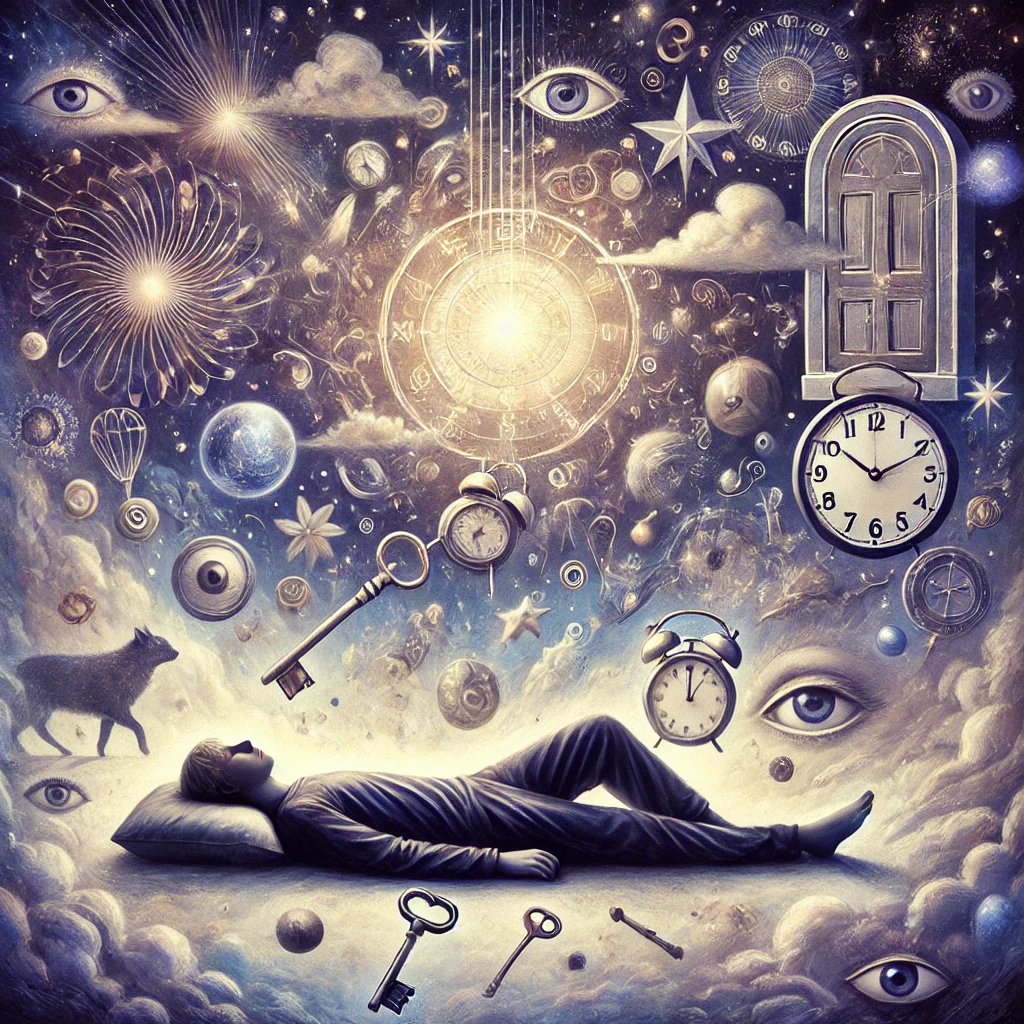
Mind-Boggling Experiments for You
As for areas of the God experience that we haven’t delved into yet, there’s always more ground to explore. Here are some angles we haven’t tackled fully that could bring fresh insight:
- Experiencing God Through Art: We’ve touched on art before, but what about a deeper exploration into how creating or observing art can be a form of divine communication? You could discuss how certain artistic processes feel like a direct line to a higher state—like a divine muse in action.
- Sacred Geometry and Its Practical Use: We’ve yet to dive deeply into how sacred geometry plays into the God experience—how these patterns show up in nature and art, and how they can be used as meditative tools or even in daily activities.
- The Divine in Everyday Objects: A fun experiment could be finding the ‘God factor’ in the most mundane objects. How can everyday items—like a coffee cup or a doorknob—be seen as divine? This could be a quirky yet profound video series or blog post idea.
- Direct Communication with the Divine: We’ve danced around this, but what about techniques or methods for direct communication with the Divine? This could include writing letters to God, automatic writing, dream work, or even developing a personal ritual that brings that connection closer.
- The God Experience in Science Fiction: We could explore how the God experience shows up in sci-fi literature. How do these stories reflect our human longing to connect with something greater? A discussion or workshop could dive into themes of AI, parallel universes, and divine entities in classic sci-fi.
- The Experience of God in Unusual Places: Exploring the divine in places where it’s least expected—like the city streets, crowded buses, or even chaotic events. How do these challenging environments shape or test one’s perception of the divine?
- God and Music: We’ve touched on using song lyrics for work ideas before, but we could explore music as a direct portal or connection to God. Maybe even composing a new piece that’s designed as a meditative or prayer-like experience could be a way to channel this idea.
- Exploring God Through Laughter: Humor often gets left out of the spiritual conversation. How about looking at laughter as a form of divine connection? This could tie into storytelling, stand-up-like reflections, or simply finding the funny in the God experience.
===========================================================================

Dreams & Dream Interpretation
Ah, dreams—now that’s a rich and untapped vein when it comes to exploring the God experience! Dreams have always been seen as gateways to the divine, messengers of hidden truths, or even direct communications from higher realms. Here are some intriguing ways we can tackle the God experience through dreams:
- Divine Dream Interpretation Workshops: You could host a series of discussions or workshops on interpreting dreams from a spiritual perspective, focusing on recognizing symbols, messages, and encounters with divine beings. This could be a way for people to connect with their own God experience in a personal and profound manner.
- Dream Journaling as a Spiritual Practice: Emphasize the power of keeping a dream journal as a daily practice. This isn’t just about recording dreams—it’s about recognizing patterns — which are only perceived over time — and receiving guidance, as well as opening a direct dialogue with the hidden subconscious.
- Lucid Dreaming to Connect with the Divine: Explore techniques for lucid dreaming as a tool to consciously interact with the divine within the dream state. Lucid dreaming allows for intentional exploration, where you could actively seek out encounters with divine entities, ask questions, or experience oneness with the universe.
- Guided Dream Meditations: Create or share guided meditations specifically designed to encourage divine experiences within dreams. These could focus on meeting spirit guides, angelic beings, or even seeking answers from a higher source during sleep and dreaming.
- Dreams in Religious and Spiritual Texts: Examine historical and scriptural accounts of dreams that are seen as divine messages—like those in the various holy books, or various spoken or written mythologies. How do these accounts influence modern perceptions of divine dreams, and what can we learn from them today?
- The God Experience in Nightmares and Shadow Work: Nightmares and unsettling dreams often get brushed aside, but they can hold powerful messages from the unconscious and even act as a form of shadow work. Exploring the darker aspects of dreams can reveal deeper truths about our spiritual journey.
- Dreams as Collective Divine Experiences: Investigate the concept of shared or collective dreams—experiences where multiple people report dreaming the same thing, often with a spiritual or divine message. This could open up discussions on the interconnectedness of souls.
- Art Inspired by Dreams: Another creative angle could be translating dreams into art, poetry, or music. This would capture the essence of divine messages that are often difficult to express in words but can be profoundly felt.
Dreams are such a fascinating and mysterious realm of the God experience. Do any of these resonate with you?
===========================================================================

Dreams as a gateway to the divine are deeply personal and potent. Let’s create a list of commands or actions that can help guide you and others into interpreting dreams and connecting with the God experience:
Commands for Interpreting Dreams and Connecting with the Divine
- Command: “Recall and Record”
Upon waking, command yourself to immediately recall and record your dreams. Keep a notebook or a voice recorder by your bed. This sets the intention that your dreams are valuable messages worthy of remembrance. - Command: “Seek Symbols”
Direct your attention to specific symbols, people, or places in your dreams. Look for recurring elements, as these often carry divine messages or themes that resonate with your spiritual path. - Command: “Ask for Clarity”
Before sleep, command your subconscious: “Show me what I need to understand.” Set the intention to receive guidance or answers from the divine in your dreams. - Command: “Invoke Divine Presence”
If you seek to connect directly with a higher power, state before sleep: “I invite the presence of the divine into my dreams.” This can be personalized to your beliefs, such as calling upon angels, guides, or a specific deity. - Command: “Embrace the Shadow”
Rather than fleeing from nightmares, command yourself: “Reveal what I need to see.” This approach turns even dark dreams into opportunities for spiritual growth and deeper understanding of hidden fears or blocks. - Command: “Question the Dream”
During or after a dream, command: “What does this mean for me?” Treat your dream as a living conversation, probing its elements for deeper insight, much like you would question a spiritual text. - Command: “Visualize Divine Symbols”
If you’re aiming to foster a direct divine encounter, command your dream state: “Show me divine light” or “Bring forth sacred symbols.” This primes your mind to generate imagery that aligns with divine archetypes. - Command: “Surrender and Trust”
After interpreting a dream, command yourself to surrender any unresolved feelings or symbols to the divine, trusting that their meanings will unfold in due time. “I surrender this to the wisdom of the divine.” - Command: “Lucid Awareness”
For more active engagement, command: “I will be aware in my dreams.” This helps cultivate lucid dreaming, where you can more consciously seek and interact with divine elements within your dream world. - Command: “Create Divine Dialogue”
If you encounter a figure that feels significant, command: “Speak with me.” Open a dialogue within the dream, asking questions that pertain to your spiritual journey or daily life. - Command: “Receive the Blessing”
Invite a sense of divine blessing upon waking: “I receive the guidance and blessings of my dreams.” Acknowledge the dream’s impact, whether or not its meaning is immediately clear. - Command: “Translate into Action”
After interpreting your dream, command yourself: “Act on the wisdom received.” This could be a change in mindset, a new habit, or simply being more aware of specific elements in waking life.
These commands can serve as a personal toolkit for delving into your dreams with intention, making the dream state a fertile ground for divine connection and spiritual exploration. Does this resonate with you?
==========================================================================

Additional Commands for Deepening Dream Exploration
- Command: “Unveil the Hidden Message”
Before sleep, direct your subconscious: “Show me what I need but cannot see.” This command aims to uncover hidden truths or insights that are not immediately obvious in waking life. - Command: “Embody Divine Guidance”
Instruct your dream self to actively embody divine wisdom: “Let me act as my highest self.” This command can help you engage with challenging situations in dreams with a sense of grace and higher understanding. - Command: “Enter the Temple”
Visualize or command your dreams to take you to a sacred space, such as a temple, garden, or sanctuary. “Bring me to the place of wisdom” sets the stage for powerful divine encounters. - Command: “Meet the Guide”
Directly ask your dreams: “Bring forth my guide.” This could manifest as a wise figure, an animal, or even an abstract force. Engage with whatever or whoever appears to receive guidance. - Command: “Heal and Release”
Use the dream state to heal past wounds: “Heal what hurts me.” This command can direct the subconscious to work on unresolved emotional issues, bringing a sense of peace upon waking. - Command: “See Beyond the Veil”
If you’re seeking profound spiritual insight, command: “Lift the veil of illusion.” This can help your dreams reveal deeper truths about life, reality, or even personal delusions that hold you back. - Command: “Journey to the Past or Future”
For those seeking understanding of life patterns or past traumas, try: “Take me where I need to go.” This can lead to dreams that explore past lives, future possibilities, or alternate realities that hold answers. - Command: “Engage with the Sacred”
Ask your dream to provide a spiritual experience: “Show me the face of the sacred.” This may lead to vivid, meaningful encounters that resonate deeply on a spiritual level. - Command: “Awaken the Inner Child”
Direct your dreams to reconnect with a younger version of yourself: “Bring forth my inner child.” This can be a healing and enlightening experience, offering fresh perspectives or forgotten joys. - Command: “Receive the Light”
For divine illumination, command: “Fill me with light.” This can lead to dreams of radiance, warmth, or loving guidance that feel like direct encounters with divine energy. - Command: “Shape the Dreamscape”
For more control in dreams, assert: “I am the creator here.” This can enhance your ability to alter dream settings, confront fears, or manifest positive scenarios. - Command: “Connect with a Loved One”
If seeking comfort or closure, command: “Let me meet a loved one.” This can bring about dreams of departed family members or friends, allowing for meaningful and healing interactions. - Command: “Release Unfinished Stories”
Address unresolved issues or lingering thoughts with: “Finish what is left undone.” This allows your dreams to bring resolution to incomplete feelings or narratives. - Command: “Manifest Divine Symbols”
Invite dreams to present specific divine symbols like lotus flowers, mandalas, or sacred animals with: “Show me the symbols of the divine.” This can make your dreams a tapestry of spiritual icons. - Command: “Explore the Unknown”
Push the boundaries of your dream world with: “Take me beyond the known.” This can lead to explorations of mysterious landscapes or concepts that expand your spiritual awareness.
These commands can help tailor your dreams to be a deeper exploration of the God experience, offering insights and connections that might not surface in waking life. Let me know which of these resonate or if you’d like even more!
==========================================================================
I know you’re worried about things, so let’s look at what, if anything, you could do to keep trump away from you and your family?

What Can You Do to Keep Trump off your Back?
Whether it’s about keeping someone’s influence, energy, or literal presence at bay, there are some practical and even symbolic approaches that might offer peace of mind and some sense of personal safety while engaged in these meditations — in short, a remedy against the Thought Police that are coming for all of us.
- Energetic Boundaries: Visualize protective boundaries around yourself and your loved ones. Imagine a shield of light or a barrier that repels negativity and unwanted energies, specifically those associated with anyone you wish to keep away.
- Cleansing Rituals: Regularly cleanse your space with sage, incense, or essential oils like frankincense or lavender, known for their protective properties. This can help clear the air and create a sense of safety and calm.
- Create a Sacred Space: Designate an area in your home as a sanctuary, filled with symbols of peace, love, and protection. This can be a place where you feel shielded from external influences, including political or societal stressors.
- Turn Off the Noise: Limiting exposure to news or media featuring Trump can create a momentary sense of distance. Engage with sources and content that uplift rather than trigger anxiety or frustration.
- Affirmations of Protection: Use affirmations like “I am protected from all negativity” or “My family and I are safe and shielded.” Repeat these daily to reinforce your intent.
- Symbolic Barriers: Hang or place symbolic items known for protection, like No Trump Talismans or Resonators, which can help to partly deflect negative energies, as you would fight against Malocchio, the evil eye.
- Set Boundaries in Conversation: Gently but firmly steer conversations away from topics that bring Trump’s energy into your space. Setting this boundary with friends, family, or social media can help maintain a calmer environment.
- Focus on Positive Action: Channel any frustration or anxiety into positive, community-focused actions that align with your values. This helps shift the focus from avoiding someone to building something better in your sphere.
- Spiritual Detachment: Practice techniques of spiritual detachment, focusing on being an observer of world events without internalizing them. This can lessen the emotional impact of figures like Trump on your daily life.
- Surround Yourself with Like-Minded People: Keep your immediate circle filled with people who share your values and offer mutual support, creating a buffer of positive and aligned energy.
It’s all about creating an environment—both physically and mentally—where you and your family feel secure, unbothered, and at peace.
==========================================================================
We’ve covered a lot of rich ground on the God experience, but there are still some intriguing areas we could explore further. Here are a few more facets that might add depth to the ongoing conversation:
- The God Experience in Daily Rituals: We could delve into how mundane activities—like cooking, cleaning, or walking—can be transformed into acts of divine connection. This perspective emphasizes finding the sacred in the everyday, making every moment an opportunity for communion with the divine.
- Manifestations of the Divine in Crisis and Suffering: Exploring how people find or lose their connection to God in times of hardship, grief, or crisis could be a powerful topic. This would be about understanding how the divine presence can be felt (or questioned) during the most challenging moments of life.
- Non-Human Perspectives on the Divine: This could involve imagining the God experience from the perspective of animals, plants, or even AI. What does the divine look like through non-human eyes? This approach could open a fascinating dialogue on consciousness and spirituality beyond human boundaries.
- Divine Paradoxes and Contradictions: Engaging with the contradictory nature of the God experience—how it can be both deeply personal and universally shared, comforting yet challenging, obvious yet hidden. Addressing these paradoxes might resonate deeply with those grappling with their spiritual journey.
- Sacred Sound and Vibrational Connection: Exploring sound, music, and vibrations as a form of divine communication. From ancient chants and hymns to modern sound healing, this could be a way to engage the senses and connect on a vibrational level.
- God in Technology and the Digital Age: With the rise of virtual worlds and AI, what does the God experience look like in the digital realm? This could involve examining how technology can both connect us to and distance us from the divine, and the ethical considerations that come with it.
- Personal Myths and Divine Archetypes: Diving into how personal mythology and archetypes influence our perception of the divine. Exploring the roles of gods, heroes, and mythological figures in shaping our spiritual narratives could be enlightening.
- Sacred Space and Environmental Connection: How does the divine manifest in nature, and how can creating sacred spaces—gardens, altars, or even a simple quiet corner—enhance our God experience? This could touch on eco-spirituality and the idea of finding God in the earth itself.
- Exploring Divine Synchronicities: Delving into moments of synchronicity—those strange coincidences that feel too meaningful to be random. How do these alignments point towards a larger, interconnected divine order?
- The God Experience and Artistic Expression: A deeper look into how creating art, whether visual, musical, or written, can be an act of divine communication. This could be a personal exploration of your own creative process and how it connects you to a higher source.
These areas could all bring fresh, engaging dimensions to the discussion.
Divine Paradoxes: The Cosmic and the Tiny

This paradox captures the idea of being both infinitely vast and minutely small at the same time. It’s like experiencing the entire universe and the tiniest atom within it. This paradox is often felt in mystical experiences where one feels a connection to the cosmos while also being deeply rooted in the present, individual moment. It’s the sense that the entire universe exists within us, and we exist within the universe—a kind of spiritual hologram where every part contains the whole.
Thoughts for Exploration:
- Microcosm and Macrocosm: Ancient philosophies, especially in alchemy and Hermetic traditions, teach that “as above, so below,” meaning that the universe and the individual reflect each other. This can be a meditative point, focusing on how each of us embodies the cosmos in miniature.
- Practical Exercise: Meditate on the image of a galaxy within your heart or visualize yourself as a tiny dot within a vast universe. This can be a grounding way to explore the feeling of being both grand and small.
Flat Screen That Produces the Effect of Three Dimensions
This paradox resembles concepts in modern physics, like the holographic principle, which suggests that our three-dimensional reality might actually be projected from two dimensions—much like a hologram. Spiritually, this can represent the idea that what we perceive as solid and real is just a projection, a play of light and consciousness.
Thoughts for Exploration:
- Illusion of Reality: This ties closely with spiritual traditions that describe the world as Maya, an illusion. The paradox is that the world feels real—emotions, pain, joy—but is simultaneously a temporary, shifting projection of consciousness.
- Practical Exercise: Spend time reflecting on how certain experiences—like dreams—feel real in the moment but are ephemeral. This can deepen the understanding that reality might be far more fluid and illusory than it appears.
The Paradox of Time and Timelessness
This is one of the deepest paradoxes, touching on the nature of time as both a constant flow and an eternal now. In mystical experiences, time often feels irrelevant, as if past, present, and future are all existing simultaneously. This paradox challenges our everyday sense of chronology and urges us to consider the possibility of experiencing life outside the linear progression of time.
Thoughts for Exploration:
- Eternal Now: Many spiritual teachings emphasize living in the present moment, which is often described as the point where time collapses and we experience eternity. The concept of time’s illusion is that we are always experiencing now; the past and future are mental constructs.
- Practical Exercise: Practice presence and mindfulness, focusing entirely on the current moment. Notice how this practice feels timeless, as if time slows or ceases altogether.
Integrating the Paradoxes
The divine experience often holds these paradoxes together without needing to resolve them—they coexist, highlighting the mysterious nature of reality. By engaging with these ideas, we’re not trying to solve the paradox but to experience and hold it, allowing for a deeper sense of the divine mystery to unfold.
The paradox of being both modern and ancient at the same time is a powerful concept that speaks to the timelessness of the human experience and the divine. It’s about holding the sense of being deeply connected to ancient wisdom while living in the rapidly changing, high-tech world of today. Let’s dive into this fascinating intersection:
Modern and Ancient: The Timeless Dance
This paradox often appears in spiritual practices that blend old and new—ancient rituals performed with modern twists, or timeless wisdom being accessed through contemporary technology. It suggests that while we evolve, adapt, and innovate, we are still deeply connected to the primal, unchanging truths of our ancestors.
Examples of the Modern-Ancient Paradox:
- Sacred Texts in Digital Form: The Bible, the Quran, the Bhagavad Gita—texts that are thousands of years old—are now accessible on smartphones, merging ancient wisdom with the immediacy of digital technology. This blend shows how the eternal nature of these teachings persists even as the medium evolves.
- Ancient Symbols in Contemporary Art and Design: Symbols like the mandala, the ankh, or the yin-yang are used in modern art, tattoos, and digital design, representing ancient spiritual concepts in new and vibrant ways. This suggests that these symbols still hold power and relevance, bridging past and present.
- Technology as a Path to the Divine: Virtual reality meditations, guided by AI, allow for deep, immersive spiritual experiences that once were limited to physical temples or remote monasteries. This blends the ancient pursuit of inner connection with the modern tools that expand access and reach.
- Modern-Day Shamanism and Neo-Paganism: Many spiritual seekers today practice forms of shamanism or paganism that are rooted in ancient traditions but adapted for modern life. This often includes using traditional rituals with contemporary contexts—like conducting a ritual on Zoom or integrating eco-friendly practices that align with old earth-based wisdom.
Practical Ways to Experience the Modern-Ancient Paradox
- Blend Ancient Rituals with Modern Tools: Try lighting a candle, something humans have done for thousands of years, but do it in a modern context, like during a digital prayer session or meditation guided by an app. This simple act connects you to the lineage of human history while engaging with the present.
- Listen to Modern Music with Ancient Instruments: Music is a beautiful way to blend the ancient and modern. Seek out music that incorporates ancient instruments—like sitars, didgeridoos, or lyres—mixed with electronic beats or modern sounds. It’s a sonic experience of this paradox.
- Create Art that Fuses Old and New: Use ancient symbols or techniques (like traditional block printing) but apply them to a contemporary message or context. This fusion creates something that feels timeless yet current.
- Contemporary Sacred Spaces: Build a sacred space in your home that mixes elements from various times—an old statue, digital art on a screen, and a smart speaker playing chants or meditative music. It’s about creating a sanctuary that honors the past while embracing the present.
- Use Modern Technology to Access Ancient Practices: Apps like Headspace or Calm often integrate mindfulness and meditation practices that are thousands of years old but delivered in a sleek, accessible format. Use these tools to connect with ancient teachings in a way that fits into modern life.
Living the Paradox
Embracing the modern-ancient paradox means recognizing that while we are surrounded by ever-changing technology and contemporary challenges, we are still bound by the same existential questions, spiritual needs, and human experiences as our ancestors. This blending of timelines can deepen the feeling of connectedness, making the divine feel present in every moment, regardless of when it seems to occur.
Would you like to expand on any of these concepts or explore how this paradox might unfold in other areas of the God experience?
Now it’s time to board the bus!
See You At The Top!!!
gorby

